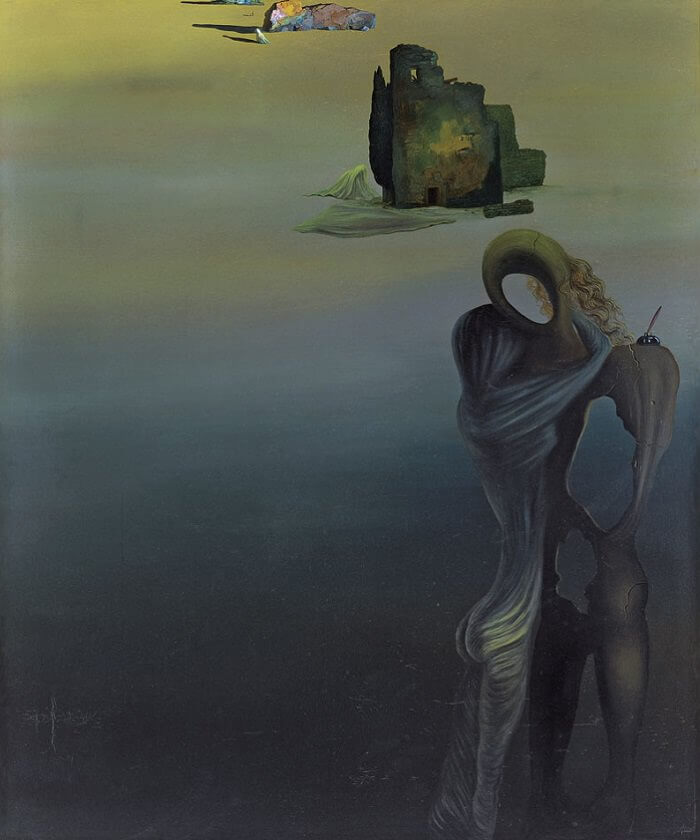Gradiva Finds the Anthropomorphic Ruins, 1931 by Salvador Dali

Dali continually mythologized his wife Gala through his paintings. Here he associates her with Gradiva, the heroine of an early twentieth-century novel by Wilhelm Jensen entitled Gradiva: A Pompeian Fantasy. It is the story of a young man who falls in love with a plaster cast of a Classical relief and then meets a woman at Pompeii who is remarkably like the sculpted figure. The novel fascinated both Freud and the Surrealists, and Dali equated Gradiva's redemption of the young man in the book with his own salvation by Gala. Predictably his pictorial references to Jensen's characters are far from straightforward, preventing any neat symbolic interpretation. In The Enigma of William Tell the relief that so fascinated the hero of Jensen's book appears in a detail, but it is combined with Dali's own extraordinary depiction of another story, that of William Tell. Both William Tell and the slightly later Gradiva Finds the Anthropomorphic Ruins are characterized by a dominant greenish tone, which adds to their lugubrious, disquieting qualities.
While the allusion to the Gradiva story in William Tell is somewhat obscure, this painting is even more enigmatic. It is dominated by a large monolithic figure, exemplifying Dali's fascination with the anthropomorphic qualities of rocks and ruined structures, as already demonstrated in both The Great Masturbator and The Invisible Man.























